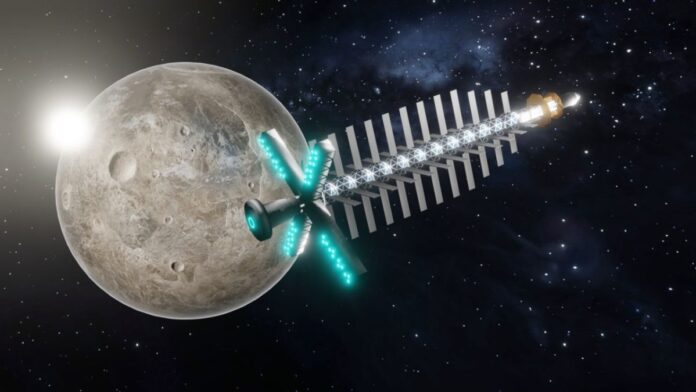The European Space Agency (ESA) is funding several studies that will explore the use of nuclear propulsion for deep space exploration.
Propulsion in space currently is conducted using a storage chemical propellant or using electric or solar power. The issue facing space agencies is these propulsion methods are reaching their respective physical limits. A nuclear-based electric propulsion (NEP) could potentially overcome these limitations and launch space missions into a new age, enabling humanity to reach farther into space than ever before.
One of studies ESA is funding, pReliminary eurOpean reCKon on nuclEar elecTric pROpuLsion for space appLications (RocketRoll) is being led by scientists from the University of Prague, the University of Stuttgart and engineers from OHB Czechspace and OHB System in Bremen.
“Nuclear propulsion can be more efficient than the most efficient chemical propulsion or overcome solar-limited electric propulsion, enabling exploration of places no other technology can reach,” said Jan Frýbort, principal nuclear technology investigator at Czech Technical University in Prague, in a statement. (opens in new tab) “This is a big challenge for future space missions beyond our solar system, for example.”
Related: NASA and DARPA will build a nuclear rocket by 2027
New methods of power and propulsion are particularly important as humanity works its way toward more sustainable space missions and even habitats and bases on the moon and beyond. This will require the delivery of equipment and supplies to the lunar surface and to Mars.
“The main advantage over chemical reaction is the efficiency of the engines,” OHB Czechspace wrote in the statement. “The advantage over solar electric power input is the larger power output and independence of exposure to direct sunlight, especially enabler for transporting heavy cargo with long time constraints and for exploration beyond Mars orbit.”
Scientists and engineers funded under this program will have the next 11 months to develop feasibility studies as part of the ESA Future Launchers Preparatory Program (FLIPP) and determine the advantages of using a NEP tug over classical propulsion systems for demanding missions.
“The aim of the study is to explore the possibilities of using nuclear fuel for demanding space logistics and exploration missions,” OHB Czechspace’s head of Project Management, Jakub Sevecek, said in the statement.
Sevecek added that RocketRoll will deliver an overview of existing European experience, technology, and industrial capabilities for the development of a nuclear-propelled spacecraft. Additionally, the study will provide a conceptual design of a nuclear electric propulsion engine. The team says it will consider the safety constraints of a NEP system from the early stages of the design.
“The use of nuclear-based electric propulsion for demanding space missions has been addressed in a number of studies in the past,” Frýbort, said. “Thanks to the current technologies, this topic is once again relevant within Europe.”
When the results of RocketRoll are delivered next year, they could form the basis of further ESA programs that look at the feasibility of NEP spacecraft that could be operational by 2035, if all goes according to plan.
NASA has opened its own program to study the use of nuclear rockets. The agency is partnering with the Pentagon’s Defense Advanced Research Projects Agency (DARPA) to develop a nuclear thermal engine and fly in an in-space demonstration as early as 2027.
Follow us @Spacedotcom (opens in new tab), or on Facebook (opens in new tab) and Instagram (opens in new tab).

